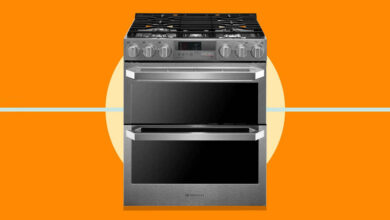Tips for Maintaining Your Dishwasher for Optimal Performance

Dishwashers have become indispensable appliances in most modern households. By efficiently cleaning stacks of dirty dishes with high-pressure hot water and detergent, they save families hours of time and effort each week. Given how often dishwashers are used, it’s important to properly maintain them so they continue delivering sparkling clean dishes for years.
This article will provide tips for basic routine care, troubleshooting common problems, advanced maintenance, and knowing when it’s time for a replacement. Following these guidelines will help your dishwasher function optimally and extend its lifespan as long as possible. Let’s get started with key things to do regularly for smooth operation.
Basic Routine Maintenance
Performing basic maintenance tasks goes a long way toward keeping your dishwasher running cleanly and quietly for over a decade. Make these inspections and cleaning activities part of your routine:
Run Empty Cycles Monthly
It’s good practice to run an empty dishwasher cycle at least once a month using hot water and dishwasher cleaner or vinegar. This flushes out any greasy residues or limescale buildup to keep the internal components and pipes clear. It’s one of the easiest ways to maintain performance. Consider scheduling it as a monthly ritual.
Use Dishwasher Cleaning Products
Specialty dishwasher cleaning products available at supermarkets and appliance stores help dissolve mineral deposits, remove odors, and de-grease the interior from food residues. Using these monthly along with an empty cleansing cycle keeps everything fresh. Look for formulations that work with stainless steel.
Inspect and Clean Removable Parts
Take out dishwasher filters, water arms, and racks periodically to give them a deep clean in the sink and check for obstructions. Clogged spinning arms, cramped racks, and dirty filters lead to poor spray coverage and unsatisfactory performance. A toothbrush helps dislodge built-up gunk.
“The key is staying vigilant with a monthly maintenance routine – things rarely become huge problems if you continually monitor for small issues.” – John, Appliance Repair Technician
Descale Regularly
In hard water areas especially, mineral scale slowly builds up inside the dishwasher attached to components which impedes spray action. Annual use of chemical descaler keeps this in check. For extreme scale, consider having a service professional descale the unit. Catching this early is crucial.
By sticking to that simple monthly regimen above, you ensure grease, gunk, and scale don’t degrade cleaning ability or breed odor and mold issues in your dishwasher’s confined wet environment.
Troubleshooting Common Dishwasher Problems
Even well-maintained dishwashers inevitably run into an issue now and then. Here are troubleshooting tips for five common dishwasher problems that may arise:
Table 1: Common Dishwasher Problems and Solutions
| Problem | Possible Cause | Solution |
|---|---|---|
| Spotty dishes | Low rinse aid, overloaded racks, blocked arms | Refill rinse aid, adjust loading, clean arms |
| Leaking | Bad door seal, pinhole leak, loose fitting | Replace seal, repair leak, tighten fittings |
| Noisy | Bad motor bearings, installation issue | Replace bearings, adjust leveling |
| Won’t start | Power or control board issues, door latch | Replace bad part, realign latch |
| Bad smell | Mildew, built-up grease residues | Clean with dishwasher cleaner |
As shown in the table, basic troubleshooting involves:
- Diagnosing the specific issue based on the symptom
- Determining the common causes of that problem
- Implementing the remedy – often some adjustment, cleaning, or part swap
While seemingly complex appliances, most dishwasher faults come down to just a handful of worn or misaligned mechanical components that are easily identifiable. Replace individual cheap parts instead of the whole appliance if possible.
Issues Dispensing Detergent
A dishwasher not dispensing detergent correctly can leave dishes filmy and improperly washed. Typically caused by low rinse agent levels or a failing detergent dispenser mechanism that doesn’t fully open, this is usually cheap to remedy.
First ensure the rinse reservoir is adequately filled. Then remove and inspect the dispenser unit following your dishwasher owner’s manual example. Look for cracks or faulty springs that keep the valve flaps shut so detergent cups don’t fully open during the cycle for complete dispensing. Replace any defective pieces.
Spray Arm Performance Issues
The spinning spray arms distribute water to properly reach and wash every dish surface. When these get clogged with debris or minerals, however, it concentrates spraying in odd directions leading to poor coverage and dirty dishes.
Carefully detach the upper and lower spray arms to bring them to a sink for rinsing out. Use a straightened paperclip to clear the nozzle holes going around the arms that blast water. Ensure no stray utensils or anything is blocking the arms from freely rotating during cycles. Reattach tightly once clear of buildup.
Build Up Causing Poor Performance
Heavy limescale, grease, or food particles build up in the dishwasher sprayer parts, hoses, and tank walls not only lead to poor cleaning but smells and potential mold over time. This more extensive mineral clogging requires descaling the unit with a chemical cleaner like citric acid.
Follow the descaler product instructions to thoroughly circulate it in an empty cleaning cycle at maximum heat. This dissolves scale so normal rinse cycles can flush it away long-term. Descaling may need repeating for excess buildup. Confirm fittings are tightened afterward.
Door Seal Leaks
Water slowly leaking out of the dishwasher door’s rubber gasket seal during operation indicates a gap or crack needing replacement. Over time heat, food particles, and simple wear compromise the integrity of door seals to not be fully watertight.
Carefully peel off the old cracked seal from the door rim after watching some tutorials. Measure and order an exact replacement gasket made specifically for your dishwasher make and model. Watch more videos on properly installing and adhering to the fresh rubber gasket on all edges. Tighten the door’s outer attachment bracket if needed.
Following troubleshooting basics helps solve many dishwasher issues without waiting weeks for expensive service calls. Investigate first before despairing!
Advanced Maintenance for Optimal Performance
Once confident with basic cleaning and troubleshooting, consider these additional maintenance tips for superior dishwasher operation:
Replace Worn Parts
Proactively replacing components showing wear after 5+ years keeps problems from arising later at inopportune times. Review your owner’s manual for info on ordering replacement parts like wash arms, door seals, hoses, filter screens, racks, and gasket kits conveniently online. Swapping critical parts ahead of outright failure reduces headaches.
Upgrade With New Features
As kitchen technology improves, splurge on upgrading older basic dishwashers with advanced features providing better and faster wash performance. Many let you add built-in water softeners, higher-powered jets, sanitize modes, noise insulation, smart sensor cycles, extra drying fans, and hidden top controls for a superior and seamless experience.
Use High-End Detergents
Up your detergent game with specialty formulations that do an even better job handling stuck-on foods, silver polishing, spot elimination, or fighting odors without scent chemicals. Using name-brand detergents designed for dishwashers truly enhances results. Some even include rinse agents and descalers for complete care.
Consider Energy Efficient Models
When buying a fully new dishwasher, prioritize Energy Star-certified models saving hundreds of dollars over a decade from reduced electricity and water consumption. Eco units with soil sensors intelligently adapt the wash cycles for each specific load saving resources. This achieves fantastic cleaning greener.
Investing that extra effort into some advanced care pays dividends through years of like-new dishwasher operation. Don’t settle for lackluster performance when a few upgrades can refresh your existing appliance or warrant buying a higher-grade replacement.
Tips to Extend Dishwasher Lifespan
You depend on a functioning dishwasher daily making it imperative to maximize useful lifespan through careful habits and protective steps:
Hand Wash Damage-Prone Items
While durable, dishwashers still involve high-pressure jets and confined racks putting delicate items at some risk of chipping and discoloration over many loads. Hand wash fine crystal, your nicest kitchen cutlery, special glasses, cast iron, decorated dinnerware, silver pieces, heirloom items, and anything with embellishments to prevent aesthetic or physical damage from harsh conditions inside.
Take Precautions Before Vacations
To avoid returning home to foul dishwasher smells after vacationing, first quick run an empty wash cycle with a cup of white vinegar right before leaving. This removes lingering debris and condensation, while the acetic acid fights odor. Also, consider unplugging the dishwasher to reboot all systems upon returning which clears stale water needing to be drained.
Follow Maintenance Tips Consistently
Stay committed year-round to the monthly door inspection, filter cleaning, hose checks, spray arm descaling, and empty vinegar flushes suggested earlier. Doing preventative maintenance consistently makes repairs less likely and extends lifespan by years. Mark your household calendar with friendly monthly dishwasher care reminders if needed!
Use Smart Settings Like Auto-Off Drying
New dishwashers have sensors that automatically stop the drying fan once internal temperatures indicate dishes are hot and dry enough for unloading. This saves energy and protects plastics against melting damage from excessive heat. Enable smart features that fine-tune cycles to end immediately without wasting resources trying to over-dry already done dishes.
Research Proper Loading Techniques
Most dishwasher capacity and cleaning problems stem from improper loading techniques cramming too many items without enough space for water circulation. Study diagrams for correctly staggering items without nesting bowls and giving spray arms clearance to spin. Loading properly reduces strain on the motor and heating element promoting longevity.
Carefully using and maintaining your dishwasher consistently over its lifetime prevents so many repair headaches and keeps it functioning like new far beyond the average. With some effort, a quality dishwasher should serve dependably for over 10 years.
Signs It’s Time to Replace Your Dishwasher
While durability is improving in modern dishwashers made of rust-resistant metals and plastics, there comes a point every decade or so when retiring an aging machine makes sense:
Frequent and Costly Repairs
Once your dishwasher requires major component replacements exceeding 50% of its original cost or needs a professional service call yearly, it’s usually more cost-effective to replace the entire appliance. If the repairs continuously pile up with no end in sight, it signals that it is time to upgrade.
Missing Desirable Features
Dishwashers of over five years old likely lack the conveniences modern owners expect like adjustable upper racks, quiet operation, sensor cycle intelligence, sanitizing modes, built-in descaling, top-tier energy savings, smooth black interiors, and electronic control panels. If missing key amenities important to your household, upgrading brings everything up to current standards.
High Energy and Water Usage
Check your owner’s manual to confirm suspicions of poor efficiency in an older dishwasher lacking soil sensors, heat recovery, low water volume operation, and smart eco modes standard in new Energy Star-certified machines. The hundreds of dollars saved yearly on utilities warrant replacing notoriously inefficient 1980s and ’90s models still soldiering on.
Rusting or Unfixable Damage
While rare in stainless steel units, visible rust spots signal corrosion and leaks needing extensive repairs that compromise structural integrity. Bad inner tank alignment stressing the motor or uncloseable misshapen doors similarly indicate unfixable wear. When fundamental elements warp and fail beyond repair from age or abnormal damage, replacement restores functionality.
If your dependable dishwasher exhibits those warning signs above or simply leaves your kitchen aesthetic wanting compared to visitors’ fancy upgrades, upgrading brings peace of mind knowing everything works smoothly for years with full features. Manufacturers intentionally make parts interchangeable between models to ease repairs until no longer sensible.
Conclusion
A clean burden-free dishwasher is essential for busy families producing stacks of daily dishes. Take proper maintenance seriously to safeguard this cherished appliance’s longevity and performance despite heavy use cleaning thousands of loads. Implement suggested monthly best practices to optimize operations while troubleshooting issues promptly as they arise.
When the time eventually comes after an admirable service tenure to upgrade your dishwasher, thoughtfully select durable and efficient replacement models providing the versatile cycles, rack adjusting, soil sensors, sanitize modes, drying fans, sleek interfaces, and overall reliable cleaning households require. Investing in superior dishwashers saves hours of labor and thousands of gallons of water over ownership.
Stay diligent towards care recommendations so your dishwasher reliably tackles messy cooking aftermath for over a decade keeping kitchen cleanup a breeze. Implement these tips for maintaining your dishwasher today!




